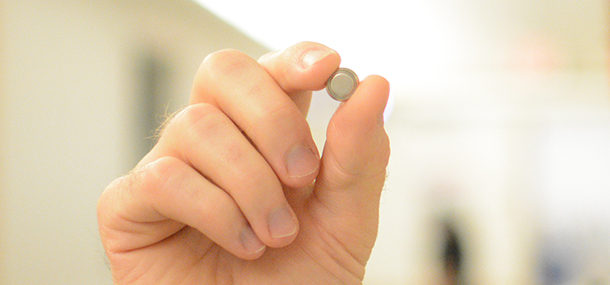
As most parents know, toddlers love to put things in their mouths. This is the main reason why ingestion of non-food items, or “foreign bodies,” is a common problem in children less than 3 years of age. According to the American Association of Poison Control Center’s National Poison Data System, there were approximately 110,000 foreign body ingestions in 2011. The vast majority of these ingestions occurred in children. Fortunately, most foreign bodies can pass through a child’s gastrointestinal tract (esophagus, stomach, and intestines) without causing any problems. There are a few types of foreign bodies, however, which can be very dangerous if swallowed.
“Button” or “disk” batteries are one such type of foreign body that can cause serious health consequences. Button batteries are commonly used to power small portable electronics devices such as wristwatches, hearing aids, and pocket calculators. Because of their small size and shiny appearance, they are very tempting and are easily swallowed by infants and toddlers. Once ingested, these batteries can cause serious internal injury, particularly to the esophagus (food pipe), within as little as 1-2 hours. Even “dead” button batteries can still retain enough voltage to cause damage. If you suspect that your child has swallowed one of these batteries, you should seek medical attention right away.
The radiologists at Cincinnati Children’s are very aware of the serious risks posed by these batteries. Fortunately, button batteries are clearly visible on x-rays and they have a characteristic appearance that usually allows for an expeditious diagnosis. Additionally, Dr. Andrew Trout and I are working with our colleagues from the departments of Gastroenterology and Otolaryngology to review all of the cases of button battery ingestion that have been treated at Cincinnati Children’s in the last 20 years. By reviewing these cases, we hope to identify better ways to diagnose and treat these patients in the future so that they can have the best possible outcome.
Contributed by Dr. Brian Pugmire and edited by Sarah Kaupp (RRA).